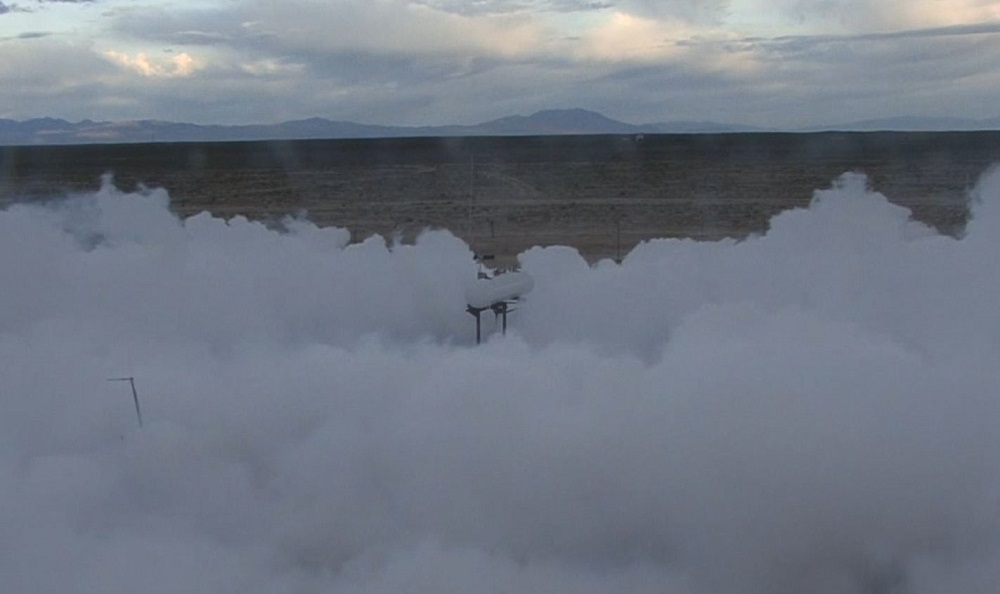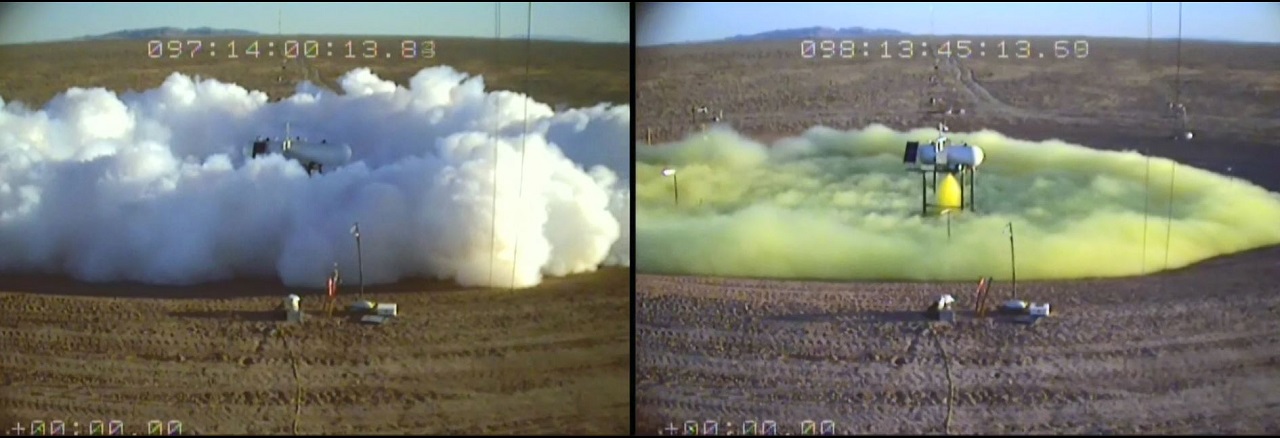
When we think of ammonia, usually cleaning products come to mind, right? Ammonia solutions are great for disinfecting your bathroom counters and giving your kitchen floors a squeaky-clean shine. But did you know that it also fertilizes most of America’s agricultural crops? And soon, the health of our planet could also depend on it—by 2040, affordable green ammonia fuel, produced without fossil fuels and without emitting greenhouse gases, could power ships, thus becoming a key climate change solution.
While this would be an environmental coup and a potential economic boon, this push for an alternative clean energy source will also drive up the demand—and higher demand means that larger volumes of ammonia will be transported across the country, increasing chemical threats.
S&T is working to ensure communities make informed ammonia-related decisions
With all of the many benefits, there are risks as well; after all, ammonia is the most produced and widely distributed toxic inhalation hazard chemical in the United States. If released in large quantities, it poses a significant risk to life and the health of those exposed.
The Department of Homeland Security (DHS) Science and Technology Directorate (S&T) is now studying how anhydrous ammonia behaves during a potential leak or spill, whether accidental or intentional, in order to inform planning efforts in communities across the the United States. Findings from these studies—named Jack Rabbit III—will improve hazard prediction and chemical dispersion modeling, emergency preparedness and response strategies, and guidelines for safe and secure storage and transport. Jack Rabbit III will also study how ammonia reacts with different materials, such as first responder equipment, vegetation and building materials in the surrounding environment.
“Because of recent changes in the commodity flow landscape and our projections of growing demand, ammonia is a greater concern that we’re monitoring,” said Dr. Sun McMasters, chemist and Jack Rabbit program manager at S&T’s Chemical Security Analysis Center (CSAC). “By educating the public about the properties of anhydrous ammonia, should it be released, and informing decision-makers of what to look out for and how to act quickly, we can better minimize injuries and casualties.”
“For instance,” McMasters continued, “ammonia is not always invisible; a white cloud of just-released anhydrous ammonia looks very similar to everyday fog. Also, ammonia will not be simply carried away by the wind after release as it initially remains very cold and sinks to the ground.”
Anhydrous means without water, and this gas strives to bind to water. When a person comes in contact with anhydrous ammonia, the ammonia rapidly reacts with moisture in the tissue and becomes caustic. This puts organs like eyes and lungs at risk, as well as skin, which could be burned or even frostbitten if in contact with a liquefied form of ammonia. Treatment of the exposed areas includes washing with water and moving to fresh air.
Large quantities of anhydrous ammonia are typically transported in a variety of conveyances. On land, ammonia is usually transported as a pressurized liquefied gas by railway in tank cars, by highway in tanker trucks, in agricultural areas in nurse tanks, and also via pipelines traversing through populated areas. A substantial amount of ammonia is transported on U.S. waterways primarily via barges along the Mississippi River and its tributaries. Additionally, several million tons of ammonia are imported and exported through U.S. coastal ports each year.
During a catastrophic spill, ammonia will be released as both a vapor and through a unique phenomenon as a freezing boiling liquid. During previous Jack Rabbit field trials, CSAC observed a white cloud of ammonia engulf a 1,000-gallon tank, spread to a diameter of over 109 yards (almost as large as a football field) and height of 16 feet, and then flatten. Such dense-gas behavior requires further investigation to better predict how buoyant ammonia behaves in real-world environments involving obstacles, vegetation, water, and terrain under various meteorological conditions.
Jack Rabbit III builds on a legacy of toxic chemical research and experiments

Over the last decade, CSAC and an interagency team of partners from government, industry and academia successfully conducted a series of outdoor experiments involving the release of toxic gases to better understand and address toxic chemical incident scenarios.
For Jack Rabbit I in 2010, CSAC conducted limited mid-scale anhydrous ammonia and chlorine releases. For Jack Rabbit II in 2015-2016, CSAC conducted large-scale chlorine releases in a simulated urban setting. Recently, 18 articles were published about this effort in a special edition of the Journal of Atmospheric Environment. Moreover, Argonne National Laboratory used the Jack Rabbit II field experiment findings to support updating chlorine protective action distances in the 2020 Emergency Response Guidebook (PDF, 396 pgs., 3.3 MB), published by the Department of Transportation’s Pipeline and Hazardous Materials Safety Administration. Lastly, the U.S. Fire Administration Report to Congress, (PDF, 61pgs., 1.1 MB) published earlier this year, highlights the value of evaluating large-scale catastrophic releases of toxic industrial chemicals in urban areas for training across the the United States, and the National Fire Academy continues to support and participate in the development of products associated with Jack Rabbit activities.
With Jack Rabbit III, S&T continues to answer questions about the safety of toxic chemicals through laboratory and field research, as well as simulation studies and modeling of plume behavior. Anhydrous ammonia was selected specifically because it ranked highest when relevant hazards were indexed and analyzed. The ranking was based on the volume of transported ammonia, number of accidents and injuries, and level of toxicity, vapor pressure, flammability and property damage.
Jack Rabbit III continues the trend of cross-sector collaboration. S&T is working alongside several DHS component agencies as well as the U.S. Environmental Protection Agency, Department of Defense (DOD), The Fertilizer Institute (TFI), Utah Valley University, and the chemical manufacturing industry partners.
“This is a tremendous joint effort. The DOD’s Defense Threat Reduction Agency R&D Reachback team (with Chief Scientist Dr. Ronald Meris), responsible for supporting FEMA’s Interagency Modeling and Atmospheric Assessment Center in response to all crises, is now cosponsoring the Jack Rabbit III Scientific Advisory Group,” said McMasters.
“Beyond its important industrial applications, anhydrous ammonia is an essential part of 75% of all the fertilizer utilized by America’s farmers,” said Justin Louchheim, TFI Director of Government Affairs. “The Fertilizer Institute’s members are pleased to be working with S&T to enhance our information regarding the risk profile associated with this essential component of our food supply.”
Lab, field studies are on the horizon for both gas and liquid ammonia
Jack Rabbit III is currently in its early stages, with several laboratory studies already in progress. One involves release of ammonia gas on surfaces like concrete, asphalt, and soil in a small environmental box to study how it reacts and how different temperatures and relative humidity affect the behavior of the gas. Another involves advanced concept technology demonstrations for small-scale releases of ammonia coming up in October 2021 at Dugway Proving Ground in the Utah desert. Preparation for large-scale test releases involving both ammonia gas and liquid will continue next year. The large-scale anhydrous ammonia outdoor releases, currently scheduled for 2023-2024, will represent high-risk surface transportation incidents. CSAC will prioritize the risk profile based on what would be the most concern for safeguarding America’s critical infrastructure from the perspectives of industry partners, the hazard prediction modeling community, emergency planners and responders.
“Large releases like this are what we will see if a big incident unfortunately happens, so we want to ensure the field trials are as close to reality as possible,” said Dr. Shannon Fox, Director of CSAC. “Toxic industrial chemical spills have such serious human and economic ramifications. The information gathered from Jack Rabbit III will save lives, mitigate the risk, and ensure safe transport.”

